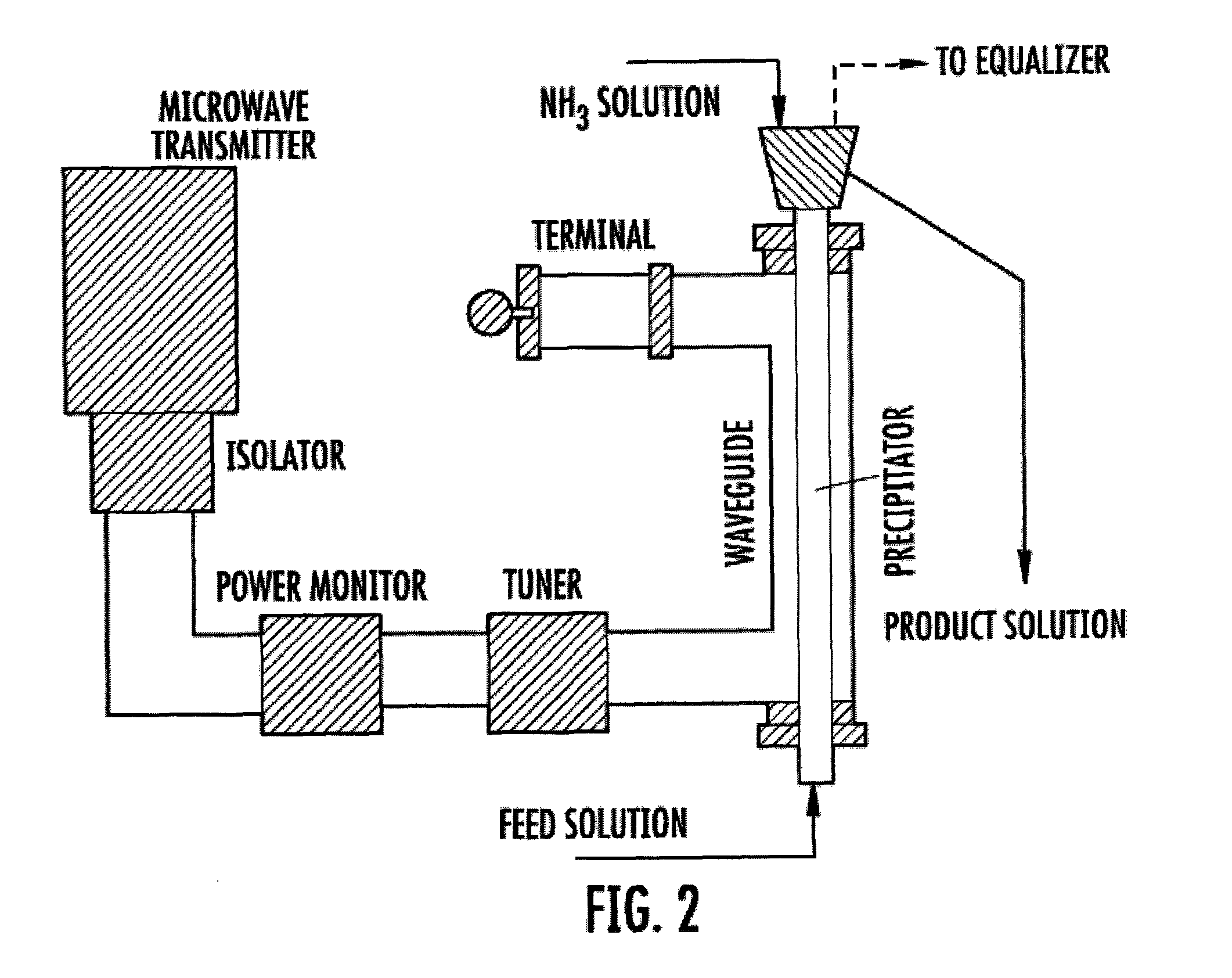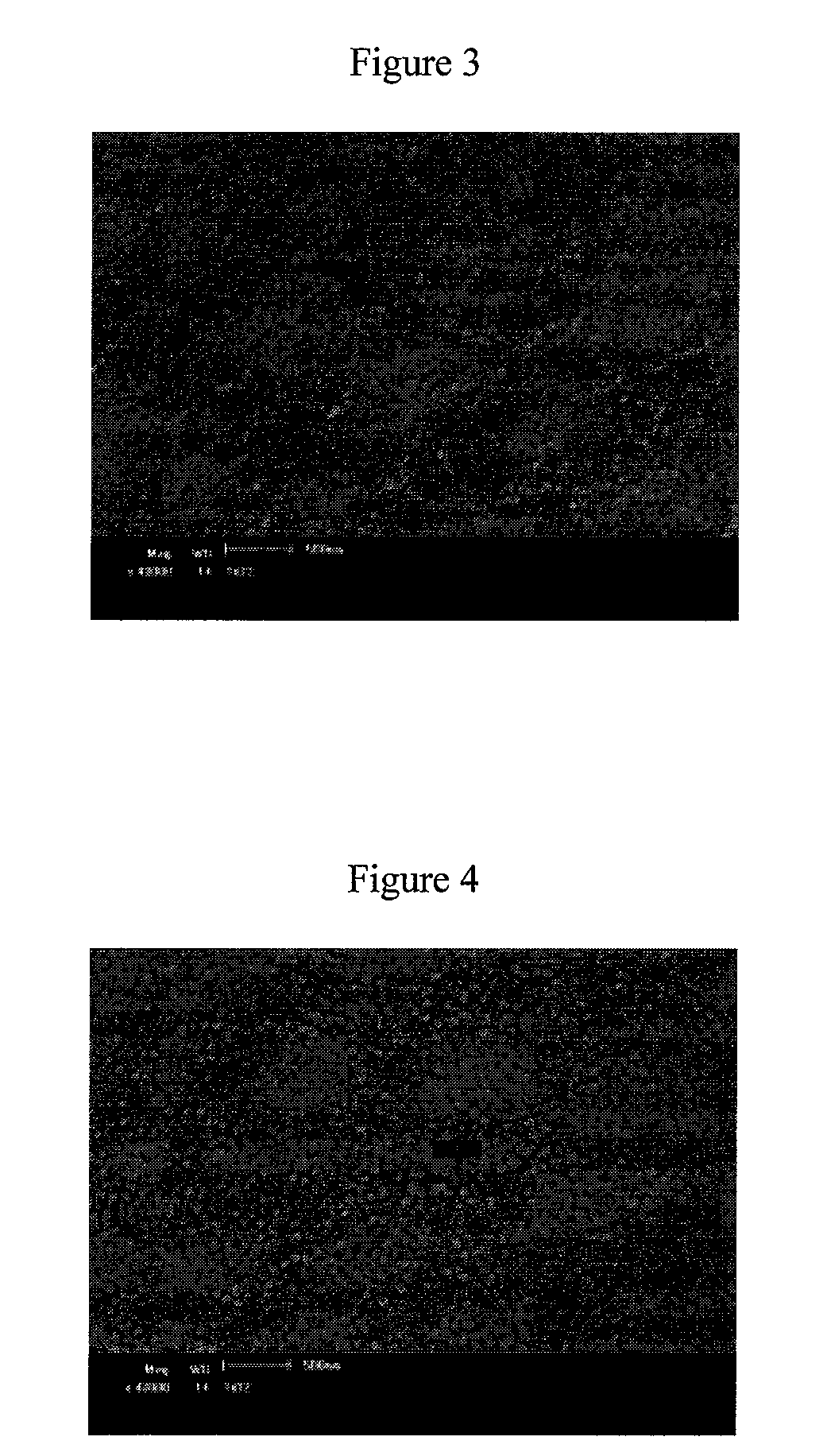Making method for titania nanoparticle
a nanoparticle and nanoparticle technology, applied in the field of manufacturing methods of titania nanoparticles, can solve the problems of substantially affecting the electrostatic propensity of toner and fluidity deterioration, and achieve the effect of high resolution and high-resolution images
- Summary
- Abstract
- Description
- Claims
- Application Information
AI Technical Summary
Problems solved by technology
Method used
Image
Examples
embodiment 1
Practical Example 1: Manufacture of Spherical Titania Nanoparticles of 30 nm Diameter
[0044]A microwave scanning device (Japan Radio Corporation, JRC: microwave generation device (NJA)) was furnished as shown in FIG. 1 and synthesis was carried out under the conditions of Table 1 below; as a result, spherical titania precursors with an average diameter of 30 nm could be obtained, and after filtering and drying these, heat treatment was performed to yield a powder of titania nanoparticles having a size of 30 nm.
[0045]The specific surface area of said powder was measured to be 58 m2 / g. Said yielded titania nanoparticles were added to dimethyldiethoxysilane (DMDES) at 16.57 weight parts per 100 weight parts, and refluxing and hydrophobization was performed thereon to obtain titania nanoparticles. The contact angle of the surface-treated titania nanoparticles was confirmed by measurement to be at least 150°, as shown in FIG. 7. 26-12
embodiment 2
Practical Example 2: Manufacture of Spherical Titania Nanoparticles of 50 nm Diameter
[0046]The microwave scanning device (please indicate manufacturer and product name) used in Practical Example 1 above was employed and synthesis was carried out under the conditions of Table 1 below; as a result, spherical titania precursors with an average diameter of 50 nm could be obtained, and after filtering and drying these, heat treatment was performed to yield a powder of titania nanoparticles having a size of 50 nm, as shown in FIG. 4. The specific surface area of said powder was measured to be 42 m2 / g. Said yielded titania nanoparticles were added to dimethyldiethoxysilane (DMDES) at 12 weight parts per 100 weight parts, and refluxing and hydrophobization was performed thereon to obtain titania nanoparticles. The contact angle of the surface-treated titania nanoparticles was confirmed by measurement to be at least 150°, as shown in FIG. 8.
embodiment 3
Practical Example 3: Manufacture of Spherical Titania Nanoparticles of 100 nm Diameter
[0047]The microwave scanning device (please indicate manufacturer and product name) used in Practical Example 1 above was employed and synthesis was carried out under the conditions of Table 1 below; as a result, spherical titania precursors with an average diameter of 100 nm could be obtained, and after filtering and drying these, heat treatment was performed to yield a powder of titania nanoparticles having a size of 100 nm, as shown in FIG. 5. The specific surface area of said powder was measured to be 25 m2 / g. Said yielded titania nanoparticles were added to dimethyldiethoxysilane (DMDES) at 7.14 weight parts per 100 weight parts, and refluxing and hydrophobization was performed thereon to obtain titania nanoparticles. The contact angle of the surface-treated titania nanoparticles was confirmed by measurement to be at least 150°, as shown in FIG. 9.
PUM
| Property | Measurement | Unit |
|---|---|---|
| diameter | aaaaa | aaaaa |
| sphericity | aaaaa | aaaaa |
| temperature | aaaaa | aaaaa |
Abstract
Description
Claims
Application Information
 Login to View More
Login to View More - R&D
- Intellectual Property
- Life Sciences
- Materials
- Tech Scout
- Unparalleled Data Quality
- Higher Quality Content
- 60% Fewer Hallucinations
Browse by: Latest US Patents, China's latest patents, Technical Efficacy Thesaurus, Application Domain, Technology Topic, Popular Technical Reports.
© 2025 PatSnap. All rights reserved.Legal|Privacy policy|Modern Slavery Act Transparency Statement|Sitemap|About US| Contact US: help@patsnap.com



